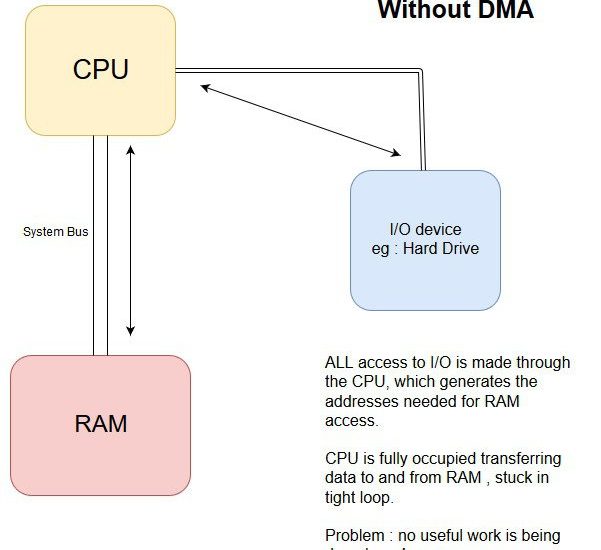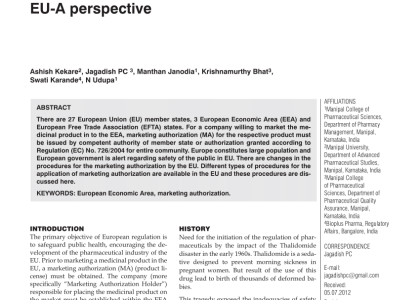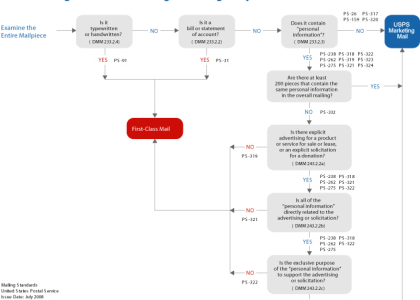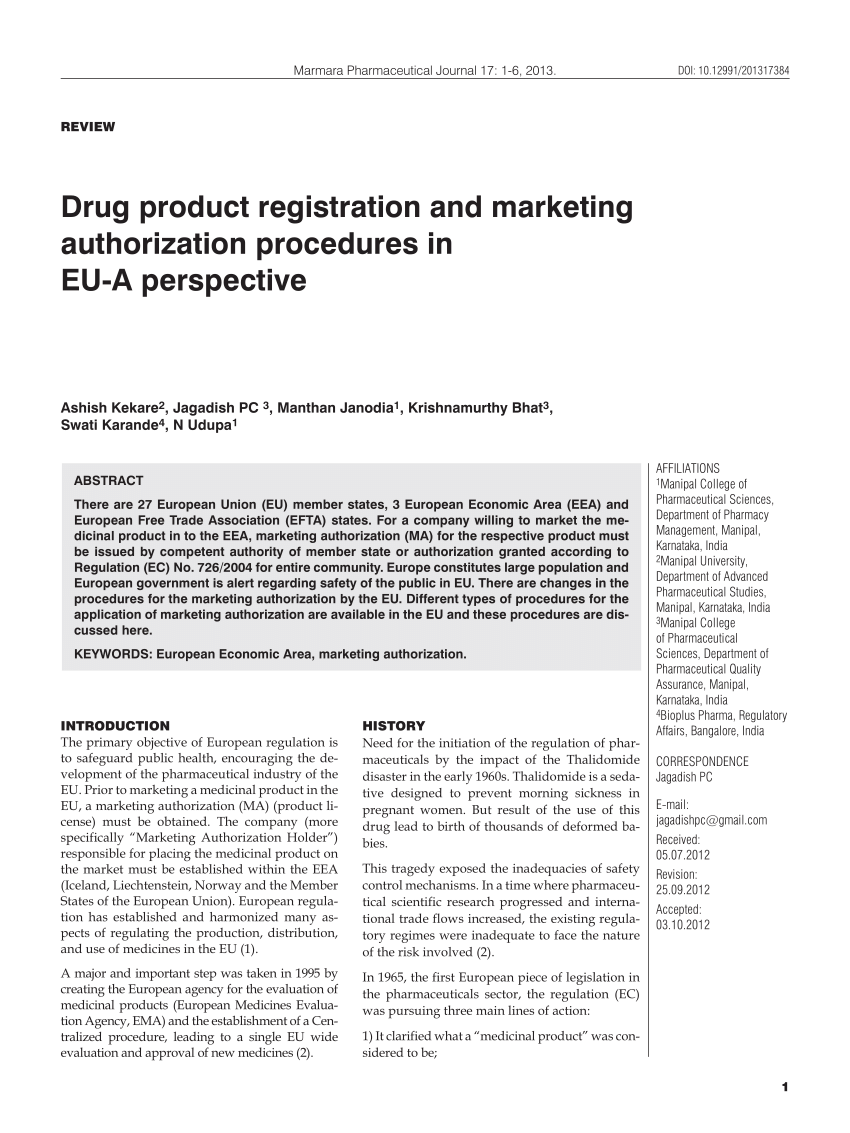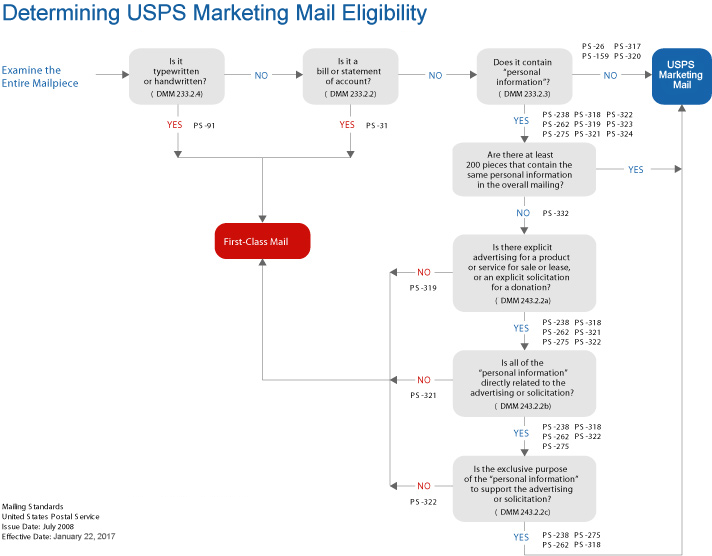Marketers continuously seek innovative ways to reach their target audience effectively. One strategy employed involves tracking geographical zones where these prospective buyers are densely populated. Cue the concept of Direct Market Areas or DMA – a term that has sparked intrigue and perplexity for many. In this article, we aim to simplify and demystify this critical jargon in the marketing space.
While the initials DMA bring up many questions – what do they really mean? What is their pertinence in the field of marketing? These questions largely remain unanswered or are subject to confusion for many. Providing clarity on this topic ought to not only enable marketers to harness their power but also create more efficient and impactful campaigns.
The article is designed to bring clarity on the subject of DMA, its relevance in marketing, its functionality, and how it can be leveraged for advantageous outcomes. Drawing from authoritative industry sources, we will decode every aspect of DMA – preparing you to incorporate it effectively for your future marketing endeavours – be you a novice or vet in the industry.
With the growing emphasis on data-driven strategies in marketing, understanding DMA becomes even more critical. This understanding will certainly elevate the efficiency of your promotions and overall marketing success. Thus, let’s dive in to find out what DMA stands for in the marketing world, shall we?
Grasping the Concept of DMA in the Realm of Marketing
A comprehensive understanding of Designated Market Areas (DMA) within the marketing context is crucial for both established and burgeoning businesses. Essentially, these are geographic areas in the United States, defined by the Nielsen Company, that represent specific television markets.
In marketing, these Designated Market Areas are commonly utilized to measure television viewership and accordingly, they facilitate targeted advertisements based on the predilections and viewing habits of the local populace.
The Nielsen Company classifies these geographic territories in such a way that each DMA is exclusively linked with one television market, thereby making sure viewership data is accurately grounded in regions.
Benefits of Using DMA in Marketing
Understanding DMAs can offer an array of advantages to marketers. Though primarily tied to television advertising, the implications of DMA data extend far beyond just that. Here are a few of these benefits explained:
- Geographically Appropriate Content: By analyzing viewing habits and preferences within DMAs, businesses can customize their advertisements to appeal directly to local tastes and cultures.
- Cost-Efficient Advertising: Utilizing DMA data to target the most receptive audiences with personalized advertising can yield high conversion rates at a lower cost.
- Avoid Duplicate Coverage: As each DMA represents one television market, businesses can prevent unnecessary duplicate coverage and consequently, avoid wasteful spending.
Understanding the concept of DMA, therefore, holds significant value in planning and strategizing in marketing. It allows businesses to effectively connect and engage with their target audience, maximizing both outreach and returns on their investments.
Defining DMA – The Concept of Designated Market Area
When it comes to comprehensive marketing strategies, one might come across the term Designated Market Area (DMA). Essentially, DMA is a geographical region that the Nielsen Company has identified and established for the purpose of analyzing demographics and broadcasting statistics. Each designated market area is characterized by its own set of attributes, which makes it a unique field of interest for advertising agencies, marketers, and companies intending to conduct area-specific marketing.
Greater Understanding of Designated Market Areas
With the understanding of DMA as a concept, one can delve deeper into the attributions that shape it. The calculation of a market territory as a DMA depends on the highest percentage of households receiving a specific station’s broadcast signals than any others within the same band. This geographical demarcation assists marketers with planning local advertising and promotional campaigns.
In marketing, precise geographical targeting like that provided by DMA helps to conduct effective area-specific marketing. With over 200 DMAs established across the United States, marketers have a plethora of regions to explore, each with its unique characteristics, preferences, and habits. The data obtained from these DMAs aid businesses to target potential customers more accurately, thereby optimizing the marketing efforts.
For instance, the behaviors and preferences of consumers in one DMA might be completely different from those in another. Thence, marketers can adjust their advertising strategies according to the available data. Thus, it minimizes wasted advertising efforts and maximizes the potential for consumer engagement and conversion.
Note: The application of DMA is not limited to traditional broadcasting. With today’s digital age, online marketers can also utilize DMA data to optimize their online advertising campaigns. Thus, ensuring they reach their target audience effectively.
The Roots of Direct Marketing Association (DMA)
The backbone of understanding DMA in the marketing world leads us back to its inception as part of understanding its evolution and relevance for businesses today. Known as Direct Marketing Association, DMA initially made its place in the world of marketing in the early 20th century – a period when businesses were seeking out more active forms of interacting with their target audiences on a direct level.
Established in 1917 as a small group of 15 businesses, the main aim of the DMA was to provide its members with an open platform where rules were set up for sending direct mail advertisements known as catalogues. The key objective was to evolve the chain of engagement between businesses and consumers, striving to provide consumers with more direct forms of marketing that businesses could benefit from. It was considered a forward leap in the advertising industry and its impact on consumer marketing was profound.
Key Milestones in the DMA’s history
- Inception in 1917 with 15 original members.
- The establishment of a formal code of practice in 1961, which remains a basic guide for marketers till date.
- In 1970, they played a decisive role in the creation of an independent self-regulatory organization, the National Advertising Review Council, providing fair and unbiased evaluations of advertising claims.
- The launch of the International ECHO Awards in 1986, acknowledging excellence in creative strategy and response results in direct marketing campaigns on a global platform.
As times evolved, so did the working dimensions of the DMA. With technological advancements and digital transformation, DMA now encompasses digital and online marketing strategies, besides traditional direct ones. Today, DMA helps companies navigate and prosper in the changing landscapes of engaging with the consumers directly whether it’s through social media, email marketing, or content marketing.
The Application of Designated Market Area in Contemporary Marketing Strategies
Today’s marketing landscape has transformed significantly with the introduction of an approaching called the Designated Market Area (DMA) concept, which is increasing in popularity. As a valuable framework, it plots the marketing strategies and advertising campaigns of companies.
The Core Components of DMA
Often, the DMA strategy employs a method of distributing media content to the right audiences, based on geographical boundaries. This includes various forms and channels of media such as radio, television, and the internet. By defining their marketing scope using this regional approach, businesses can more effectively target potential customers and maximize their reach.
Customizing Marketing Efforts
DMA is also a crucial tool for marketers to customize their efforts according to the customers’ tastes, preferences, and cultures in a specific region. This geographical segmentation helps marketers to concentrate their resources on a market area, crafting marketing messages that cater to their target audience’s needs and expectations.
Digital Marketing and DMA
Further, in the digital world, the role of DMA has become even more significant. Marketers now utilize DMA data to more precisely target online advertisements. The information collected by DMA can directly impact the placement of ads on social media platforms and search engines, ensuring that these ads are as effective as possible.
- The DMA strategy ensures the right allocation of resources, thus enhancing efficiency while reducing waste in marketing efforts.
- Using DMA, companies can optimize their social media campaigns and local SEO practices for maximum visibility in a targeted market area.
- DMA is a cost-effective strategy that can bring about significant improvements in market penetration, brand awareness, and ultimately, revenue.
Overall, DMA is a powerful strategy that enables businesses to fully utilize their marketing efforts and ultimately stay competitive in their designated markets. The application of DMA is integral to modern marketing practices and continues to impact how companies approach and understand their customers.
Dissecting the Role of Geographical Marketing Areas
In the marketing world, the concept of Designated Market Areas (DMA) is primarily used to identify and define geographical regions. Relying on statistical data, advertisers and marketers apply it to streamline advertising campaigns and enhance promotional strategies. This complex tool might seem intimidating at first, but its functionality can be broken down into simpler components.
Component: Audience Segmentation
One of the crucial features is audience segmentation. Instead of addressing the whole market, firms can separate the audience into smaller, manageable chunks based on geographical location. The geographical division allows for a focused approach where the promotional efforts are catered to the needs of the specific audience in the designated geographical area. Tailoring campaigns in this manner ensures that the audience feels personally addressed and connected.
Component: Media Planning
A strategy of prominence in the role of geographical marketing area planning is media planning. This involves using specifically gathered demographic and statistical data. Such information includes preferred media channels, popular viewing times, and prime listening periods amongst others in that designated area. Consequently, advertisement placements can be optimized to maximize reach, engagement, and conversions. It also aids in making informed decisions about the practicality and profitability of ventures into new markets.
Component: Competition Analysis
Understanding how rivals are operating in the same designated marketing area is another significant component of DMA. Marketers can gain insight into competitor strategies, their targeting methods, preferred media platforms, and more. This knowledge can be leveraged to create unique selling propositions, develop superior marketing strategies and hence, gain a competitive edge.
Component: Tracking Success
Finally, a geographical marketing area system helps evaluate the success of the marketing campaigns. By measuring metrics like audience reach, engagement rate, and conversion rate for the designated region, marketers can get a fairly accurate picture of whether their strategies are working as they hoped.
Regardless of the chosen promotional strategy, the DMA acts as a key instrument that induces a more empirical and focused approach towards marketing.
The Value of Regional Market Analysis in Formulating Effective Marketing Strategies
In the domain of business marketing, leveraging regional market breakdown offers key insights that shape strong marketing plans. For this reason, the crucial role of Designated Market Area (DMA) cannot be overstated.
Refining Audience Targeting
Designated Market Area is instrumental in refining audience targeting strategies. Due to geographical differences, consumer behavior often varies significantly across different regions. By subdividing the national market into smaller, regional segments, businesses can create tailored marketing messages that resonate with the unique preferences and needs of consumers in each DMA. This enables a more efficient use of marketing resources and higher engagement rates.
Furthermore, understanding regional market divisions allows businesses to analyze competition on a more granular level. It provides insight into how competing brands are performing in different areas, creating potential opportunities for companies to differentiate their offerings and improve their competitive position within specific DMAs.
- Customer Profiling: DMA helps in building detailed customer profiles based on the data collected about consumer behavior in a particular region. This includes preferences, habits, and purchase history to streamline marketing efforts.
- Media Planning: Understanding the viewer habits of a DMA can influence an advertiser’s decision about which channels or programs to place their commercials on. This helps to increase the ad’s reach and efficacy.
- Precise Channel Allocation: With DMA, a business can effectively allocate resources to different marketing channels that have proven to be the most effective in that particular region. This ensures a better return on investment.
In conclusion, implementing DMA in marketing strategy enhances the understanding of market dynamics on a regional level, improves competition analysis, and facilitates more targeted and effective marketing actions.
Exploring the Advantages of Leveraging Designated Market Areas in Advertising and Marketing Campaigns
The upside of using Designated Market Areas (DMAs) in your advertising and marketing strategy is multi-faceted. The main advantage lies in the ability to target specific geographic locations with tailored content. This allows businesses to further optimize their advertising strategy, leading to better results and increased ROI.
Geo-Targeting
Geo-targeting is a critical aspect of contemporary marketing. With DMAs, marketers and advertisers can design campaigns focused on specific locales. Armed with data about the habits and preferences of the population in those areas, businesses can customize ads appropriately. This leads to increased engagement, higher conversion rates, and ultimately an improved bottom line.
Cost Effectiveness
By focusing on designated market areas, businesses can allocate their resources more efficiently. No longer does a message have to appeal to everyone universally. Instead, it can be directed towards those who are most likely to respond favorably. This net effect is a significant reduction in wasted advertising spend, leading to more cost-effective campaigns.
Improved Audience Understanding
By studying individual DMAs, marketers deepen their understanding of different audience segments. As they segment the market geographically, they are also able to highlight demographic and psychographic patterns that reside in those particular areas. Each DMA has its unique combination of characteristics. Understanding this can lead to more effective communication strategies.
Market Penetration
Lastly, by treating each DMA as a separate market, businesses can develop localized strategies and gradually penetrate the market. With this approach, businesses can meet customers’ needs more efficiently and effectively. This, in turn, increases customer satisfaction and loyalty, securing a company’s market position in the long run.
Success Stories: Businesses That Boosted Their Marketing Performance by Leveraging Geotargeting Techniques
Marketing strategies have greatly evolved with the advent of technology, specifically with digital advancements. A significant instance of this is the use of geographical targeting in advertising campaigns, also known as DMA (Designated Market Areas) use. Here are a few instances where companies used this technique to their advantage and reaped high returns.
Online Ecommerce Marketplace
One prominent online marketplace saw an impressive surge in its customer engagement when it started incorporating geotargeting in its marketing strategy. The firm mapped its customer’s buying patterns and preferences to their geographical data. The results? They delivered personalized offers and product recommendations, thereby increasing their customer engagement rate by a substantial percentage.
Not just that, their return on ad spend (ROAS) skyrocketed as they reached out to potential customers who were in/close to the regions where their listed products were more popular or needed.
Retail Clothing Giant
A leading retail clothing company managed to get over a hunch in their sales by adopting geotargeting in their advertisements. They analyzed geographical customer data and noticed a trend – certain clothing items were more popular in specific geographical locations. Using this insight, they optimized their ad campaigns by pushing those items more aggressively in those areas, resulting in a significant hike in conversions.
Food Delivery Service
A top trending food delivery chain capitalized on the power of localized marketing by offering area-specific discounts and offers. They used customers’ geographical data to understand the popularity and demand for particular cuisines in different areas. Based on the insights drawn, they promoted specific restaurants and dishes within those regions. Safe to say, their strategy was a big hit, leading to increased orders and overall business growth.
These cases underline how effective geotargeting can be if deployed strategically in marketing initiatives. It helps businesses become more customer-centric, provide personalized experiences, and hence, drives better results.
Overcoming Obstacles When Deploying Direct Marketing Area Strategies
Navigating the path of implementing direct marketing area (DMA) strategies can be fraught with challenges. These hurdles can be overwhelming, but through strategic planning and understanding, marketers can optimize these targeted campaigns effectively.
Facing the Impediments in Integrating DMA Approaches
A significant challenge associated with DMA adoption is achieving accurate geo-targeting. Geo-targeting refers to the process of delivering different content to a consumer, based on his or her geographical location. It is crucial to remember that DMAs are designated market areas recognized by Nielsen Media Research, and their boundaries may not match up neatly with actual market or industry boundaries. This disparity can lead to inconsistent results or misdirected efforts.
Another substantial hurdle is personal data privacy. With stricter privacy regulations taking effect worldwide, marketers must tread carefully while collecting and using consumer data. Obtaining proper consent and maintaining transparency while using such personal information is a must.
DMA implementation requires substantial technological infrastructure and skilled manpower. The processes involved can be complex, involving gathering, analysing, and interpreting vast amounts of data. Consequently, companies may require sizable investments in technology and talent to meaningfully deploy DMA strategies.
A final challenge to consider is the rapidly changing media landscape. With emerging platforms and shifting consumer behaviors, DMAs’ effectiveness can vary significantly over time. Marketers need to continuously monitor and adapt their strategies to ensure continued relevance and effectiveness.
Solutions to Overcome these Hurdles
- Fine-tuning Geographic Targeting – Marketers can overcome the geo-targeting obstacle by refining their geographic segmentation using more granular data, and ensuring their targeting strategies are flexible and nuanced.
- Upholding Data Privacy – Compliance with data privacy regulations is not just a legal requirement but also helps build trust with customers. Regularly updating privacy policies, ensuring transparent data handling practices, and gaining explicit consent from users can resolve potential privacy issues.
- Investing in Tech and Talent – Investing resources in robust data analytics platforms and hiring competent professionals can solve the technological challenge. Training existing staff and adopting automating processes where possible can also be beneficial.
- Evolve with the Changing Media Landscape – Marketers need to stay alert and responsive to emerging media trends and platforms. Continuously testing, learning, and adapting will aid marketers in successfully deploying DMA in a fluctuating media scenario.
Projecting the Future Trajectory of Direct Marketing Association in the Marketing Landscape
Within the edifice of marketing, the role of the Direct Marketing Association (DMA) has continually experienced pivotal evolution, making its future trajectory an interesting consideration. Questioning what lies ahead for DMA returns to understanding what DMA signifies within marketing.
Essentially, it is an organization that continuously revolutionizes the process of reaching consumers directly. Over the years, this concept has evolved considerably, encompassing not just traditional direct mail, but cultivating an impact in various digital platforms as well.
The Path to Digital Transformation
With the digital evolution, DMA has extended its footprints in email marketing, telemailing, digital advertising, and data-driven marketing. It has emerged as an all-encompassing entity that stands at the intersection of consumer reach and effective use of customer data to drive marketing decisions. In the future, the emphasis would be on harnessing data more effectively and innovatively to influence customer behaviors.
As marketing progresses towards greater personalization and optimization, the role of DMA is likely to intensify. DMA can significantly contribute to the identification of successful campaigns, prediction of customer behavior, and discernment of newer customer segments. This makes DMA an indispensable tool for achieving effective, efficient, and personalized marketing.
- Innovative implementation of Artificial Intelligence: As AI becomes more prevalent, the analytical capability of DMA is likely to increase many-fold. This could lead to better targeting and increased capacity for predictive marketing.
- Dependence on Big Data: As organizations continue to generate data at an unprecedented rate, the DMA will be more center-stage in sifting, sorting, and interpreting those data to create compelling marketing tactics.
- Rise of Omni-channel Marketing: With the rise of different digital platforms, DMA’s role will expand significantly to include multi-platform reach for impactful marketing campaigns.
Factoring in these ongoing trends, the future of Direct Marketing Association is poised to contribute invaluably towards defining and refining the marketing domain. It is evident that the reach of DMA will only magnify as marketers look for innovative strategies to reach customers more effectively.
FAQ: What does dma stand for in marketing
What is a media market and how is it related to the concept of DMA in marketing?
A media market is a region where the population can receive the same (or similar) television and radio station offerings, and it’s often used in the context of DMA (Designated Market Area) marketing. A DMA is a specific geographic area that represents a particular television viewing market, identified by Nielsen Ratings.
How many DMAs are there in the United States, and what is their significance in marketing?
There are 210 DMAs in the United States, each representing a distinct broadcast market. These DMAs are significant in marketing and advertising research as they help in defining geographic areas for targeted advertising and understanding media markets.
In what ways do metropolitan areas and DMA regions overlap in the context of broadcast marketing?
Metropolitan areas and DMA regions often overlap in broadcast marketing, as a DMA can cover an entire metropolitan area or parts of several. This overlap is crucial for defining market regions for TV and radio advertising campaigns.
Why is DMA targeting important for companies looking to optimize their marketing mix?
DMA targeting is important as it allows companies to tailor their marketing mix to specific market regions. By targeting a local DMA or a bigger DMA with surrounding areas, businesses can more effectively reach their desired market segments.
How do Nielsen ratings contribute to understanding designated market areas for television advertising?
Nielsen ratings contribute to understanding designated market areas by providing household population estimates and viewership data. This information is essential for marketers and advertisers to target the right audience segments within a specific DMA.
What role does DMA play in mobile advertising and location-based advertising strategies?
In mobile advertising and location-based advertising, DMA plays a role by allowing marketers to target user’s geographic location more precisely. The use of DMA data helps in creating more relevant and effective ad campaigns that resonate with local audiences.
How is the term “market area” used in television advertising and what does it signify?
The term “market area” in television advertising is an advertising term that stands for different regions in the United States where specific content can be broadcasted. It signifies the geographical reach of a television station’s broadcast signal.
Can streaming services and networks utilize DMA numbers for advertising purposes?
Yes, streaming services and networks can utilize DMA numbers for advertising purposes. They use DMA data for defining geographic areas and tailoring content and ads to suit the viewing preferences of specific regions.
What is the significance of the DMA system for public relations and marketing professionals?
For public relations and marketing professionals, the DMA system is significant as it provides valuable data for creating targeted marketing and PR campaigns. Understanding DMA territories helps in crafting messages that resonate with audiences in specific market regions.
How do DMA numbers influence the cost of advertising in different market regions?
DMA numbers influence the cost of advertising as they represent the size and demographics of the television viewing audience in a specific market. Bigger DMAs or those with higher competition on the market tend to have higher advertising costs due to greater audience reach and brand loyalty potential.
What is DMA marketing and how does it impact advertising strategies?
DMA marketing refers to marketing within specific Designated Market Areas, which are geographically defined regions used to tailor advertising strategies. By targeting audiences within a DMA, marketers can more effectively reach potential customers with relevant products or services.
How are states divided into separate marketing areas for advertising purposes?
States are divided into separate marketing areas based on television viewing patterns. These areas, known as DMAs, help advertisers target specific regions more accurately, optimizing their marketing efforts for those geographic locations.
What is the significance of laser marketing data in the context of DMA marketing?
Laser marketing data is crucial in DMA marketing as it provides precise, detailed information about consumer behaviors and preferences within a specific DMA, enabling marketers to tailor their strategies and improve lead conversions.
Why might a company choose to focus its marketing efforts on one media market or DMA?
A company might focus its marketing efforts on one media market or DMA to concentrate resources on an area where its target audience is most dense, leading to more effective advertising and potentially higher conversion rates.
How is the term “market area” used in television advertising?
The term “market area” in television advertising is an advertising term used to describe a specific geographic region where a particular market can receive the same broadcast content, typically defined by a DMA.
What is the importance of the DMA for New York City in television advertising?
The DMA for New York City is crucial in television advertising as it represents one of the largest and most influential markets in the United States, offering significant opportunities for advertisers to reach a vast and diverse audience.
How can understanding DMA system overlap be useful for marketing and advertising?
Understanding that market areas can overlap in the DMA system is useful for marketing and advertising because it allows for more precise targeting of your audience, especially in areas on the edge of one DMA that might receive broadcasts from adjacent DMAs.
How does the D.C.-Hagerstown DMA illustrate the concept of overlapping market areas?
The D.C.-Hagerstown DMA illustrates overlapping market areas as it encompasses the Washington, D.C. metropolitan area and parts of Western Maryland. This overlap means that some marketing campaigns may reach audiences in both densely populated urban areas and more rural settings.
What role do online streaming services play in the context of local television viewing and DMAs?
Online streaming services are changing the landscape of local television viewing and DMAs. While DMAs are based on traditional broadcast regions, streaming services offer content that can bypass these geographical constraints, leading to more diversified viewing habits.
How are the 210 designated market areas (DMAs) identified and used in marketing?
The 210 designated market areas in the United States are identified using a 3-digit numeric code and are used in marketing to segment the national market into smaller, more manageable areas for targeted advertising campaigns and programmatic deals.

